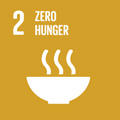- Docente: Damiano Cavallini
- Credits: 2
- SSD: AGR/18
- Language: Italian
- Teaching Mode: Traditional lectures
- Campus: Bologna
- Corso: Single cycle degree programme (LMCU) in Veterinary Medicine (cod. 8617)
-
from Feb 26, 2025 to Apr 15, 2025
Learning outcomes
At the end of the module, the student is familiar with the regulations governing the preparation and trade of feedstuffs, the characteristics, possible contaminations and technological treatments of raw materials, the main preparation and feedstuff techniques and their advantages; he/she is able to assess the qualitative characteristics of feedstuffs.
Course contents
This course provides a comprehensive overview of the various aspects of feed production, combining theory and practice to prepare students for a career in animal nutrition.
Organisation of the feed mill
Feed mill structure
Feed formulation
Feed treatments
Feed additives
Feed Compounds
Feed quality
Feed legislation
Feed labelling standards
GMOS
Raw material recognition exercises
Readings/Bibliography
Main Textbooks:
‘Animal Nutrition’ by Peter McDonald, J.F.D. Greenhalgh, C.A. Morgan, R. Edwards, L. Sinclair, R.G. Wilkinson
A comprehensive text covering all aspects of animal nutrition, from raw materials to feed formulation.
‘Feeds and Feeding: A Handbook for the Student and Stockman' by Frank B. Morrison
A classic of animal nutrition literature, providing a sound theoretical and practical basis on feed formulation and use.
‘Animal Feed Formulation: Economics and Computer Applications' by Gene M. Pesti, Bill R. Miller
A book that combines economic principles with the use of feed formulation software, very useful for hands-on learning.
In-depth books:
‘Feed Manufacturing Technology V’ by American Feed Industry Association.
A detailed handbook covering feed manufacturing technologies and processes.
‘The Encyclopedia of Farm Animal Nutrition’ by M. F. Fuller
An encyclopaedic resource providing detailed information on all aspects of farm animal nutrition.
‘Handbook of Feed Additives 2023' by Feedinfo
An up-to-date analysis of the various additives used in feed and their impact on animal health and productivity.
Articles and Online Resources:
Journal of Animal Science and Biotechnology (JASB)
A scientific journal that publishes recent research articles in the field of animal nutrition and biotechnology.
Feedstuffs
An online magazine offering up-to-date news, technical articles and analysis of the feed industry.
Feedipedia
An online encyclopaedia providing detailed information on feed materials used in animal feed.
FAO Animal Feed Resources Information System
A global resource provided by FAO with detailed information on feed resources, production and quality.
Teaching methods
Lectures
Practical Exercises with Animal Feeds
Practical exercises at the UNIBO Teaching-Experimental Barn
Educational visits to feed mills
Assessment methods
The final exam will integrate the animal nutrition, large animal feeding class, pet feeding class, feed technology class. The final examen will consist of a multiple choice test and a practical part as follows:
-
Initially the student will have to formulate a ration for one of the specie studied during the integrated classes (swine, ruminants, cats or dogs)
-
Then the student will be asked to identify and describe a feed ingredient
-
Finally, the last part will include 54 multiple-choice questions (6 questions for each one of the 10 credits of the integrated course.
-
The students will get up to 3 points fro the practical test, up to 27 points from the multiple-choice questions and up to 3 from the feedstuff description.
Teaching tools
Learning Material (Slide / Animal Feed)
Software and Applications (Rationing)
Manuals and Technical Guides
Scientific Journals and Articles
Online Platforms and Digital Resources
Office hours
See the website of Damiano Cavallini
SDGs



This teaching activity contributes to the achievement of the Sustainable Development Goals of the UN 2030 Agenda.
